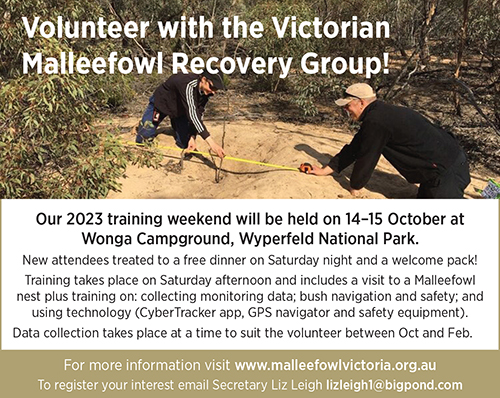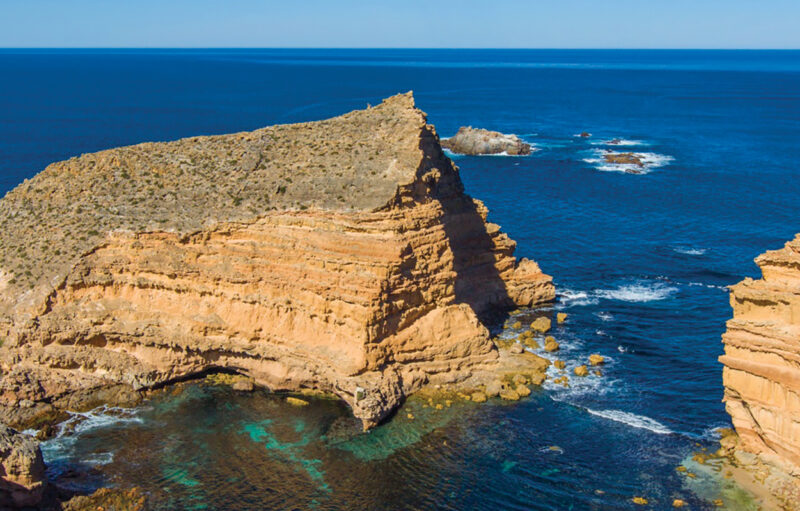PARK WATCH Article June 2023 |
Mick Webster says volunteering for the Victorian Malleefowl Recovery Group is good fun and great exercise
As a confirmed non-birder, I must admit to having been captured by the amazing bird that is the Malleefowl (Leipoa ocellata). Since retiring I’ve participated in many ‘citizen science’ programs all over the world, the best-organised and most satisfying to me has been the Victorian Malleefowl Recovery Group (VMRG).
Malleefowl is a turkey-sized bird that inhabits semi-arid scrublands from north-west Victoria and western New South Wales, to the Indian Ocean in Western Australia. A male bird spends winter constructing a mound of leaf-litter and soil up to five metres across and a metre high, in which his mate will lay up to 30 eggs over the following summer. As the eggs incubate deep below the surface the male adjusts the temperature by opening or closing the mound, even covering it in sticks to drain off any rain. The chicks hatch one by one, and take many hours to fight their way to the surface – once there they roll down the slope and scurry off into the bush – no parental after-care!

We also maintain and check about 70 camera traps in the Victorian Mallee, taking photos of every animal that comes past over a year. This gives us a good indication of what’s out there in the bush.
We all meet again at the Reporting Weekend the following autumn, when we learn the results for the year. Sadly numbers of active nests have declined from over 200 in 2012 to only 136 in 2021-22 out of over 1300 visited. But the good news from 2022-23 is we counted 209 active nests – the best year since 2012. More research is needed on breeding, predation and competition for food from kangaroos and feral herbivores.
So, we need more volunteers! It’s an amazingly well-run program and lots of fun and good exercise!
For more information, visit www.malleefowlvictoria.org.au
- Read the latest full edition of Park Watch magazine
- Subscribe to keep up-to-date about this and other nature issues in Victoria
- Become a member to receive Park Watch magazine in print
